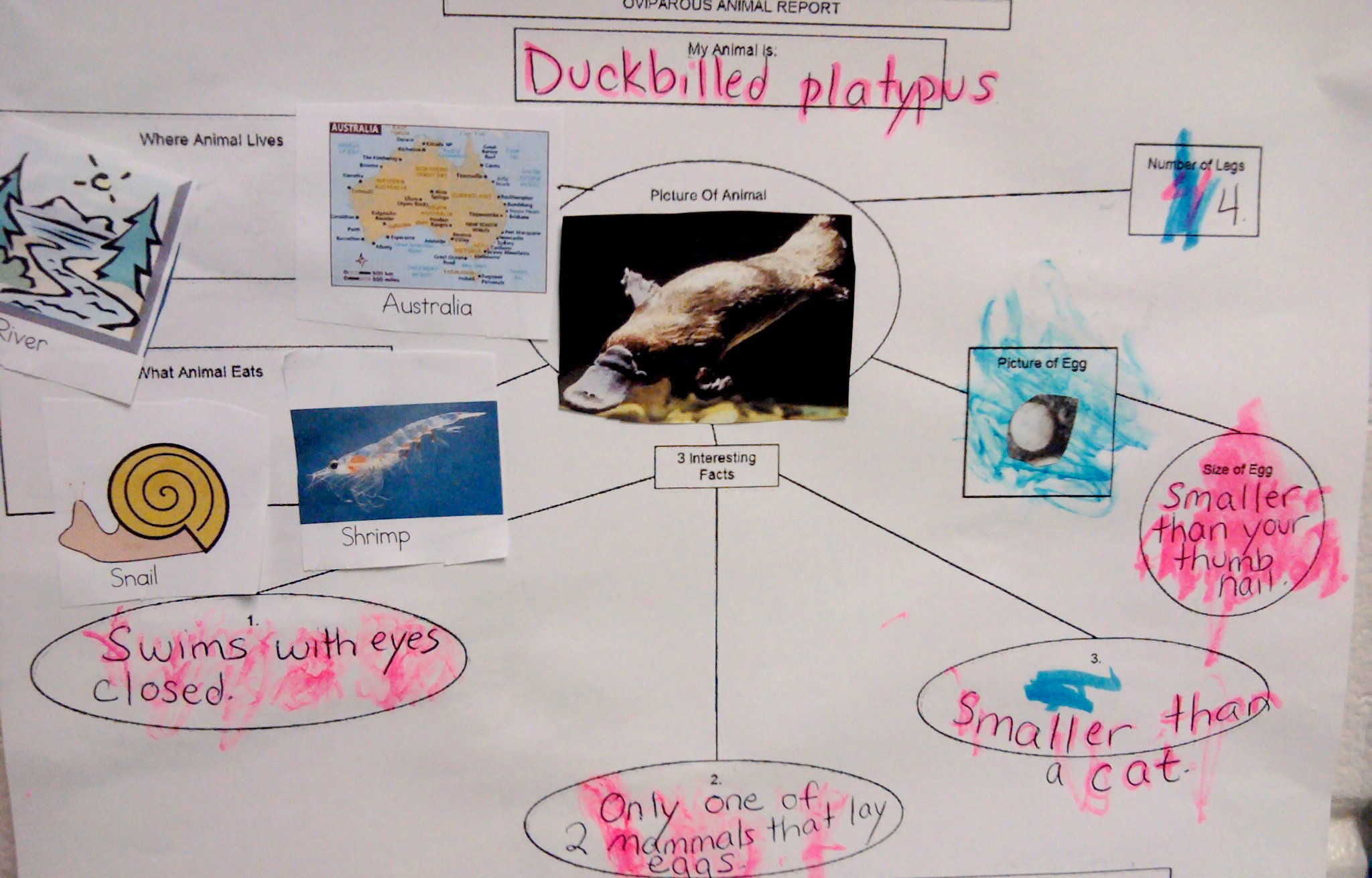A few weeks ago, I shared my oviparous animal report template, which was really just a simple concept map for kids to fill out. Last week, we used them. I wrote up one-page information sheets on ten different oviparous animals, including fun facts and photos on the pages. Each student had to pick their favorite oviparous animal, and use the information sheet to fill out the animal report template. We hung these on the wall in the hallway to share what we'd learned. The kids really liked doing this, which was surprising to me because they complain about writing assignments a lot. Some of them (especially Kite) actually asked if they could do more!
Here is how our reports turned out.
Here is Starling's. I actually helped her with a lot of it, because she came in late and missed a lot of the lesson, and because, well, she is Starling. I differentiated it for her and some other kids by including small pictures on the information sheet that they could glue onto the correct spots in the concept web, and I helped her find fun facts to include.
Duckbilled Platypus
Lives: In Australia, near rivers
Eats: Snails and shrimp
Egg size: Smaller than your thumbnail
Number of legs: 4
Fun facts: Is one of only 2 mammals that lays eggs.
Swims with its eyes closed.
Is smaller than a house cat.
Next is Kite's.
Sea Horse
Lives: On the bottom of the ocean
Eats: Loves to eat shrimp
Egg size: Very tiny
Number of legs: 0
Fun facts: They suck up shrimp through their snouts like a vacuum.
Baby sea horses are on their own after they hatch.
They like to change colors to blend (into the) background.
Oriole enjoyed doing his, although you can see the difficulties he has with writing. He puts all the words there, but not necessarily in any particular order.
Mallard Duck
Lives: North America and Europe
Eats: Fish and tadpoles
Egg size: A little bigger than a chicken egg
Number of legs: 2
Fun facts: A mallard duck will lay 300 eggs in a year.
If you hear a mallard duck quacking it is probably a female. Male ducks only make a raspy coughing noise.
A mallard duck can fly up to 70 feet per second!
Here is Towhee's...
Adelie Penguin
Lives: Antartica
Eats: Fish
Egg size: 2-4 inches tall
Number of legs: 2
Fun facts: Adelie penguins eat snow.
Adelie penguins build their nests out of stones.
Thee penguins are seen in the movie Madagascar.
Next comes Martin's. He picked the wolf spider, but then he got sort of freaked out because he's a little afraid of spiders, and he didn't even like looking at the picture of one! He conquered his fear enough to finish this, luckily.
Wolf Spider
Lives: Forests, meadows and gardens
Eats: Mosquitoes
Egg size: Tiny
Number of legs:8
Fun facts: The mom carries her babies.
Lives on the ground.
They have 8 eyes.
Those are all the reports I have, since Rosella, Jay and Triller were out of the room and didn't get to do it. I was really proud of their projects! It seemed like they put more effort into these, and were able to learn more and use more of their drawing talents and thinking skills, than in other writing projects. I'm going to have to remember this for the future!
There are still a few more things I have to show you, so stay tuned!






No comments:
Post a Comment
Do you have something to share with the class?